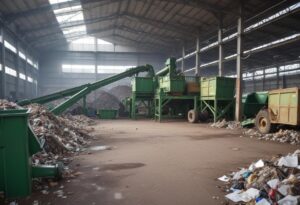Himalayan Glaciers Melting: A Looming Water Crisis for India?
The Himalayas, often referred to as the “Third Pole” due to the vast amount of freshwater stored in its glaciers, are a vital source of life for millions across Asia. However, these majestic mountains are facing a significant threat – climate change. Rising temperatures are causing rapid glacial retreat, raising concerns about a looming water crisis for India and other downstream countries.
The Great Reservoirs: Importance of Himalayan Glaciers
The Himalayas are home to the largest concentration of glaciers outside the polar ice caps. These glaciers act as giant natural reservoirs, storing winter snowfall and releasing meltwater during the dry summer months. This meltwater feeds major rivers like the Ganges, Indus, Brahmaputra, Mekong, and Yangtze, providing water for irrigation, drinking, and hydropower generation for over 1.9 billion people. In India alone, an estimated 800 million people depend on these rivers for their basic needs.
The significance of these glaciers extends beyond simply providing water. They also regulate river flows, mitigating floods during peak melt seasons and ensuring a steady flow during drier periods. They contribute to regional climate patterns and maintain healthy ecosystems downstream. The melting of these glaciers, therefore, disrupts a delicately balanced system.
A Cause for Alarm: Rapid Glacial Retreat
Scientific evidence paints a concerning picture. Studies show that the Himalayan glaciers are retreating at an alarming rate. A 2021 University of Leeds study revealed that these glaciers are melting “at least 10 times higher than the average rate over past centuries”. Satellite data indicates that between 1960 and 2000, the Himalayas lost 13% of their glacial area. This retreat is projected to accelerate in the coming decades, with some estimates suggesting a potential loss of up to three-quarters of the glacial volume by the end of the 21st century.
The reasons behind this rapid retreat are clear – rising global temperatures. Increased greenhouse gas emissions trap heat in the atmosphere, causing a warming trend that is particularly pronounced in high-altitude regions like the Himalayas. This warming leads to increased melting and sublimation (direct conversion of ice to vapor) of glaciers, reducing their overall mass.
A Multifaceted Crisis: The Downstream Impacts
The melting of Himalayan glaciers poses a multifaceted crisis for India. Here’s a closer look at the potential impacts:
Water Scarcity:
As glaciers shrink, the amount of meltwater available during dry seasons will decline. This will lead to water scarcity, impacting agriculture, a sector that employs a significant portion of India’s population. Reduced water availability will also affect hydropower generation, a crucial source of clean energy.
Increased Floods and Disasters:
While a decrease in meltwater in the long run is a concern, the initial phase of glacial retreat can lead to a paradoxical situation – increased flooding. Melting glaciers can cause glacial lake outburst floods, sudden and devastating floods triggered by the breaching of moraine dams holding back glacial lakes. These events can cause immense loss of life and property.
Impact on Ecosystems:
Reduced river flows can disrupt ecosystems downstream, impacting aquatic life and the delicate balance of wetlands and riparian zones. Changes in river flows can also affect sediment transport, leading to coastal erosion and impacting agriculture in delta regions.
Socioeconomic Challenges:
The water crisis triggered by melting glaciers will have a domino effect on India’s economy and society. Reduced agricultural productivity can lead to food insecurity and price hikes. Water scarcity can also lead to displacement of populations and social unrest.
Beyond Borders: A Regional Threat
The crisis isn’t limited to India. Several other countries in the region, including Pakistan, Nepal, Bhutan, and Bangladesh, are also heavily dependent on the rivers fed by Himalayan glaciers. A water crisis in India would have cascading effects on these countries as well, impacting regional stability and cooperation.
A Race Against Time: Urgent Need for Action
The situation demands immediate and decisive action. Here are some potential solutions:
Mitigation Efforts:
Globally, aggressive action is needed to curb climate change. This includes reducing greenhouse gas emissions by transitioning to renewable energy sources and adopting sustainable practices.
Adaptation Strategies:
India needs to develop robust adaptation strategies to cope with the inevitable impacts of glacial retreat. This includes improving water management practices, promoting water conservation, and developing drought-resistant crop varieties.
Regional Cooperation:
Collaboration with other downstream countries is crucial. Sharing data on glacial melt rates, developing early warning systems for GLOFs, and exploring joint water management initiatives are essential steps.
Investing in Research & Development:
Further research is needed to understand the complex dynamics of glacial retreat and develop innovative solutions. This includes exploring technologies for artificial glaciers or cloud seeding to potentially enhance snowfall and replenish glacial mass. Investing in climate-resilient infrastructure, such as improved irrigation systems and water storage facilities, can also help mitigate the water crisis. Public awareness campaigns can educate citizens on the importance of water conservation and encourage them to adopt water-saving practices in their daily lives.
The future of India and its water security is intricately linked to the fate of the Himalayan glaciers. By prioritizing climate action, adaptation strategies, and regional cooperation, India can navigate this complex challenge. However, time is of the essence. A collective and urgent effort is needed to ensure a sustainable water future not just for India but for the entire region.
- Fur-Ever Friends Boutique: Tail-Wagging Treasures
- Critter Comforts and Beyond: Exploring the Expansive World of Pet Shops
- Paws, Claws, and Beyond: Navigating the Vast Realm of Pet Store Wonders




